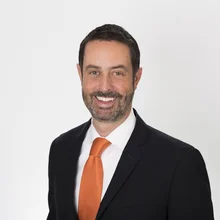Not all digital securities were created equal
Cusip’s Matthew Bastian explains that a tokenized asset offering is not the same as other products that get tagged as being a digital asset. The differences are becoming more important as the capital markets industry continues to explore these new offerings.

Remember when blockchain was all anyone on Wall Street could talk about? Now, as dozens of the most high profile blockchain initiatives in finance have been quietly shelved, a new fixation has captured the collective consciousness: digital assets.
Over the past year, major central banks, regulatory bodies, and banks and payments companies have launched significant initiatives focused on monetizing and monitoring digital assets. The most aggressive of these, such as the People’s Bank of China’s cryptocurrency initiative, are already in pilot testing and some commentators are calling the potential benefits of digital assets “too great to ignore.”
As I wrote in the pages of Waters Technology in 2016, blockchain had some serious limitations to overcome in order to fulfill its wildly optimistic expectations at the time; namely, it had to adapt to the features of traditional securities (and capital markets in general) that don’t have a parallel with blockchain’s native asset—the cryptocurrency.

Now, as we turn our gaze to the digital asset, we’re facing a similar set of challenges that the starry-eyed pundits continue to ignore. Chief among them is widespread confusion over what a digital asset really is.
The overall terminology in this space remains unruly and difficult to nail down: is a tokenized asset offering (TAO) the same as an initial coin offering (ICO) or a security token offering (STO)? What are the differences and where does the Venn Diagram overlap? ICOs had a hot run in 2017-18 until the bottom fell out. It was an overhyped, unregulated market filled with what proved to be worthless offerings and investors chasing bitcoin-like returns. The SEC went so far as to set up a dummy website to point out some of the red flags in the ICO market: “buy now!” pressure, guarantees of implausible returns, and fictious executives.
In a small but significant step to bringing common agreement to the terminology used in digital assets, Sifma published a white paper that distinguished between security tokens and tokenized securities. Simply put, the former is native to the blockchain environment, while the latter is a digital representation of a more traditional security format (e.g. book-entry).
These efforts aside, there is a tendency—a flawed one—to view digital assets as a homogenous asset class unto itself. The error in this approach is that it grants too much cohesive power to the blockchain, which is basically just a fancy new way of transferring and recording ownership of the asset in question.
But the blockchain doesn’t change the underlying nature of the asset. To draw an analogy, the “all digital assets are alike” approach would be akin to saying that every lot purchased at an auction house is similar because each item was bid on by people raising their paddles. But nobody would suggest that an auction’s rare manuscript had anything in common with the Impressionist painting or collector’s automobile. In a similar vein, a property deed is still a property deed whether it’s tokenized or not—and it has little in common with a security token.
Put more simply: the first question about digital assets must always be “what is the asset?” and not “what is the mechanism for exchange?”
With that in mind, Cusip Global Services has been focused on providing the market with unique identifiers and descriptive data for TAOs that are also unregistered securities. But the starting point for a Cusip remains the same: the requirement to have a valid offering document from which we can extract the necessary data attributes to guarantee uniqueness.
As market participants and regulators work to realize the potential benefits of the digital asset space, including more efficient trade settlement, the industry needs to reach agreement on basic terminology and the appropriate guardrails for the market. This effort would also benefit from adhering to a basic axiom: not all digital assets are created equal.
Matthew Bastian is senior director of market development at Cusip Global Services
Only users who have a paid subscription or are part of a corporate subscription are able to print or copy content.
To access these options, along with all other subscription benefits, please contact info@waterstechnology.com or view our subscription options here: http://subscriptions.waterstechnology.com/subscribe
You are currently unable to print this content. Please contact info@waterstechnology.com to find out more.
You are currently unable to copy this content. Please contact info@waterstechnology.com to find out more.
Copyright Infopro Digital Limited. All rights reserved.
As outlined in our terms and conditions, https://www.infopro-digital.com/terms-and-conditions/subscriptions/ (point 2.4), printing is limited to a single copy.
If you would like to purchase additional rights please email info@waterstechnology.com
Copyright Infopro Digital Limited. All rights reserved.
You may share this content using our article tools. As outlined in our terms and conditions, https://www.infopro-digital.com/terms-and-conditions/subscriptions/ (clause 2.4), an Authorised User may only make one copy of the materials for their own personal use. You must also comply with the restrictions in clause 2.5.
If you would like to purchase additional rights please email info@waterstechnology.com
More on Emerging Technologies
This Week: Startup Skyfire launches payment network for AI agents; State Street; SteelEye and more
A summary of the latest financial technology news.
Waters Wavelength Podcast: Standard Chartered’s Brian O’Neill
Brian O’Neill from Standard Chartered joins the podcast to discuss cloud strategy, costs, and resiliency.
SS&C builds data mesh to unite acquired platforms
The vendor is using GenAI and APIs as part of the ongoing project.
Chevron’s absence leaves questions for elusive AI regulation in US
The US Supreme Court’s decision to overturn the Chevron deference presents unique considerations for potential AI rules.
Reading the bones: Citi, BNY, Morgan Stanley invest in AI, alt data, & private markets
Investment arms at large US banks are taken with emerging technologies such as generative AI, alternative and unstructured data, and private markets as they look to partner with, acquire, and invest in leading startups.
Startup helps buy-side firms retain ‘control’ over analytics
ExeQution Analytics provides a structured and flexible analytics framework based on the q programming language that can be integrated with kdb+ platforms.
The IMD Wrap: With Bloomberg’s headset app, you’ll never look at data the same way again
Max recently wrote about new developments being added to Bloomberg Pro for Vision. Today he gives a more personal perspective on the new technology.
LSEG unveils Workspace Teams, other products of Microsoft deal
The exchange revealed new developments in the ongoing Workspace/Teams collaboration as it works with Big Tech to improve trader workflows.







